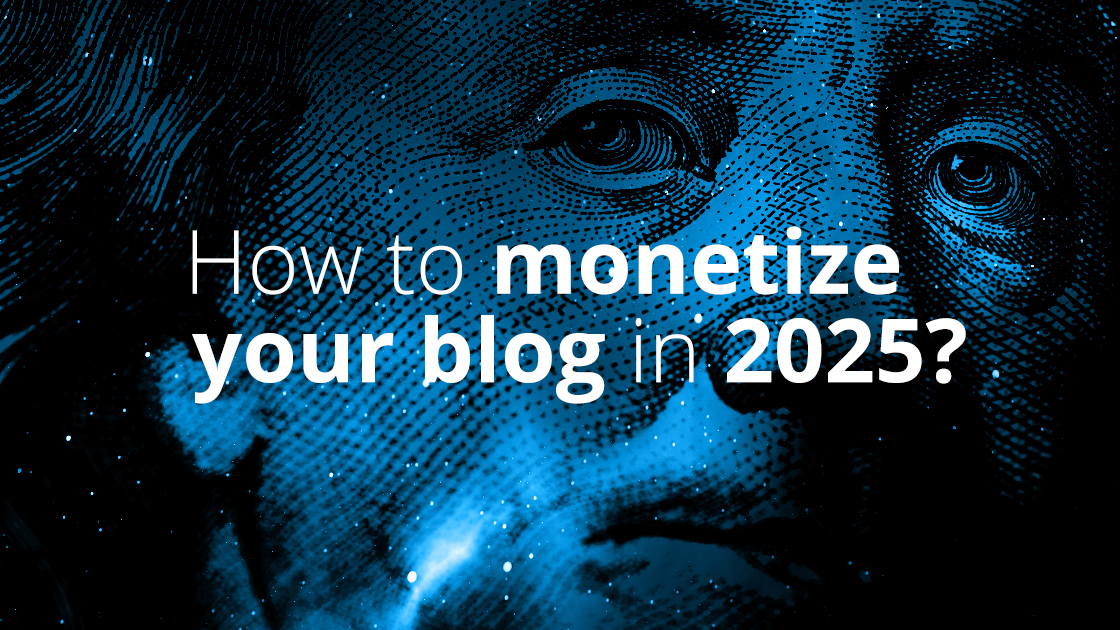In today’s fast-paced digital landscape, programmatic advertising has become a fundamental aspect of the marketing ecosystem. It empowers businesses to reach their target audiences with precision and efficiency, ensuring maximum returns on their ad spend. However, navigating the world of programmatic advertising can be overwhelming, especially with the multitude of expressions and abbreviations involved. Fear not! In this comprehensive guide, we will demystify the most crucial terms to help you master programmatic advertising.
1st Party Data:
Data collected directly from a company’s own audience or customers, used to personalize ad campaigns and enhance targeting.
2nd Party Data:
First-party data acquired from another company through a direct partnership.
3rd Party Data:
Data obtained from external sources, not directly related to a company, to enrich audience insights.
Above the Fold:
Refers to the portion of a webpage that is visible without scrolling, where prime ad placements are usually found.
Ad Exchange:
A platform that facilitates the buying and selling of ad inventory through real-time bidding auctions.
Ad Inventory:
The total available ad space on a website or app.
Ad Network:
A company that connects advertisers to publishers, managing ad placements across various websites.
Ad Server:
Technology that delivers and tracks online ads, ensuring they are displayed correctly on websites.
ads.txt:
A text file that authorizes and authenticates the sellers of a website’s ad inventory, reducing ad fraud risks.
Agency Holding Companies:
Large corporations that own multiple advertising and marketing agencies.
Agency Trading Desk:
An agency-operated platform for managing programmatic ad buying on behalf of clients.
Audience Extension:
Expanding the reach of an ad campaign by targeting audiences similar to existing customers.
Audience Segmentation:
Categorizing audiences based on specific characteristics for targeted ad delivery.
Behavioral Targeting:
Delivering ads based on users’ online behavior and interests.
Bid Rate:
The number of bid requests an ad exchange receives from DSPs.
Bid Request:
A request from an ad exchange to a DSP for a bid on an ad impression.
Bid Response:
A DSP’s reply to an ad exchange with the bid price for an ad impression.
Blacklists:
Lists of websites or apps where advertisers do not want their ads to be displayed.
Brand Lift:
Measuring the impact of an ad campaign on brand awareness and perception.
Click-Through Rate (CTR):
The percentage of ad impressions that result in clicks.
Completion Rate:
The percentage of users who view an entire video ad.
Contextual Advertising:
Displaying ads that are relevant to the content of a webpage.
Cost Per Acquisition (CPA):
The cost of acquiring a new customer through an ad campaign.
Cost Per Action (CPA):
The cost of a specific action taken by a user, such as a form submission or download.
Cost Per Click (CPC):
The cost of each click on an ad.
Cost Per Completed View (CPCV):
The cost of each completed view of a video ad.
Cost Per Engagement (CPE):
The cost of each user engagement with an ad, such as a click or video play.
Cost Per Install (CPI):
The cost of each app installation as a result of an ad.
Cost Per Mille (CPM):
The cost of one thousand ad impressions.
Cost Per Result:
The cost of achieving a specific outcome, like a sale or sign-up.
Cost Per Thousand (CPM):
Another term for CPM, indicating the cost for one thousand ad impressions.
Cost Per View (CPV):
The cost of each view of a video ad.
CPA, CPC, CPCV, CPE, CPI, CPM, CPV, CTR, CTV:
Various pricing models used in programmatic advertising.
Data Management Platform (DMP):
A platform for collecting, managing, and analyzing audience data.
Daypart:
Dividing the day into specific time segments for ad targeting.
Demand Side Platform (DSP):
A platform that allows advertisers to manage and optimize ad campaigns across multiple ad exchanges.
Designated Market Area (DMA):
Geographic regions used for targeting ads based on TV viewership.
Device ID:
A unique identifier assigned to a user’s device for targeted advertising.
DOOH:
Digital Out-of-Home advertising, utilizing digital displays in public spaces.
Dynamic Ad Insertion:
Delivering personalized ads in real-time based on user data.
eCPM:
Effective Cost Per Mille, calculated by dividing total earnings by total ad impressions in thousands.
Endemic Advertising:
Targeting ads to a specific niche or industry.
Fill Rate:
The percentage of ad requests that are successfully filled with ads.
First Look:
An option for preferred buyers to view and bid on ad impressions before they are offered to other buyers.
Geotargeting:
Targeting ads to specific geographic locations.
GRP:
Gross Rating Point, used to measure the reach and frequency of ad campaigns.
Header Bidding:
An advanced auction technique that allows multiple ad exchanges to bid simultaneously for an impression.
Independent Trading Desk:
An external agency or vendor that handles programmatic buying on behalf of advertisers.
In-house Programmatic Trading Desk:
An internal team within an advertiser’s organization responsible for programmatic buying.
Insertion Order:
A contract specifying the terms and conditions of an ad campaign.
Instream Video:
Video ads that play before, during, or after online video content.
Interstitial Ads:
Full-screen ads that appear between content pages.
Last Click Attribution:
Assigning credit for conversions to the last ad clicked by a user before the action.
Lookalike Audiences:
Targeting users who share similarities with existing customers.
Media Ratings Council (MRC):
An organization that establishes measurement standards for the media industry.
Meta DSP:
A DSP that integrates multiple DSPs to access a broader range of inventory.
MidRoll:
Video ads that play during the middle of online video content.
Open Exchange:
A programmatic ad marketplace with open access for buyers and sellers.
OpenRTB:
Open Real-Time Bidding, an open protocol for real-time bidding.
Outstream Video:
Video ads that appear outside of video content, such as in-article video ads.
Pay Per Click (PPC):
A model where advertisers pay for each click on their ads.
Personally Identifiable Information (PII):
Data that can identify an individual user.
PMP:
Private Marketplace, a controlled environment for programmatic buying and selling.
Post Roll:
Video ads that play after online video content.
Prebid:
A technology that allows multiple demand sources to bid on ad impressions.
Pre Roll:
Video ads that play before online video content.
Price Floor:
The minimum price set by a publisher for selling ad inventory.
QPS:
Queries Per Second, measuring the rate of ad requests to a server.
Rate Card:
A document detailing the pricing and specifications for ad placements.
Real-Time Bidding (RTB):
The process of buying and selling ad impressions in real-time auctions.
Remarketing:
Targeting users who have previously interacted with an advertiser’s website or app.
Reserve Price:
The minimum price set by a seller for an ad impression in an auction.
Retargeting:
Another term for remarketing.
RON, ROS:
Run of Network, Run of Site, indicating ads displayed across the entire network or site.
RTB:
Real-Time Bidding, often used as a synonym for programmatic advertising.
Second Price Auction:
An auction where the highest bidder pays the second-highest bid price.
Sell Through Rate:
The percentage of ad inventory that is sold.
Share of Voice (SOV):
The percentage of ad impressions compared to the total available impressions.
SSP:
Supply-Side Platform, enabling publishers to manage and sell their ad inventory programmatically.
VAST:
Video Ad Serving Template, a standardized format for video ad delivery.
vCPM:
Viewable Cost Per Mille, calculated based on the cost of ad impressions deemed viewable.
Video Completion Rate:
The percentage of users who view an entire video ad.
Viewability:
Measuring whether an ad was actually seen by the user.
View Through Rate (VTR):
The percentage of users who view a video ad to its completion or a specified milestone.
VPAID:
Video Player Ad-Serving Interface Definition, enabling interactive elements in video ads.
VTR:
Another term for View Through Rate.
Whitelist:
A list of approved websites or apps where advertisers want their ads to be displayed.
Win Rate:
The percentage of ad bids won in real-time auctions.
Congratulations! You’ve now delved into the fascinating world of programmatic advertising, and all those complex expressions and abbreviations are no longer a mystery. Remember, programmatic advertising is constantly evolving, and staying updated on the latest trends and technologies is essential to thrive in the digital advertising landscape.
Do you want to deepen your understanding of programmatic advertising concepts and stay ahead of the game? Our expert support and cutting-edge technology offers the perfect environment to explore the intricacies of programmatic advertising and elevate your digital advertising strategy to new heights! Get in touch today!
Happy programmatic advertising!
Would you like to know more? Are you interested in increasing the revenue from your site? Contact us - we can help you!
If you're already a member, and you have a question, contact our Customer Success Team. We will help you!






